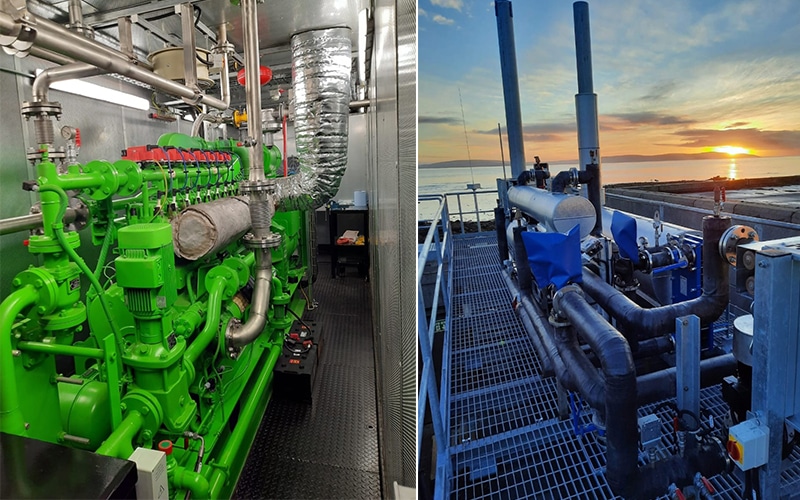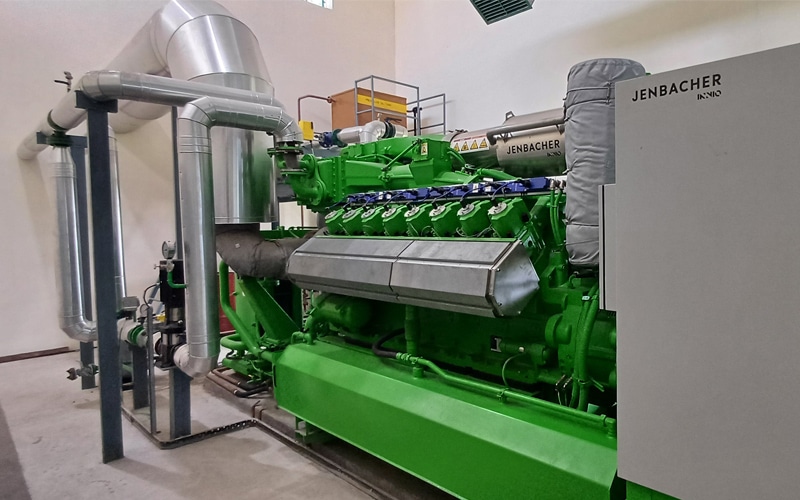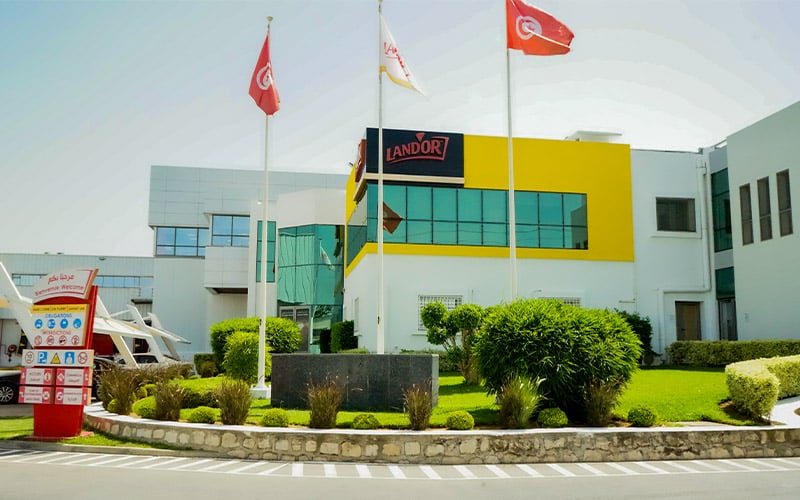Exhaust gas heat exchangers (EGHE) utilize waste heat from the exhaust of the Jenbacher gas engine cogeneration plant. They are typically located adjacent to the engine or are mounted on the roof of a containerized combined heat and power unit. They are present in a wide range of different applications and along with the other systems can be used to achieve overall system efficiencies of over 90%. The shell and tube design facilitates the transfer of thermal energy from the exhaust gas, into a circulating hot water system typically. This may sometimes be joined to the engine cooling circuit or may exist as a separate circuit depending upon the engine configuration and project specifics. Each EGHE is designed project specifically by our sub-contractors on the requirements with respect to gas type, pressure loss flow conditions and available space.
Each EGHE is typically coupled with an exhaust gas bypass unit. These bypasses divert the exhaust gas away from the exhaust gas heat exchanger in order to isolate it from the hot water circuit for certain operational events. This may be when there is low demand for the hot water or for a maintenance event on the engine. These bypass systems may be designed using electrical or pneumatic actuators depending upon the requirements. Exhaust gas heat exchangers are lagged and cladded in order to prevent heat escaping and to reduce noise emissions from the exhaust.
EGHE’s differ from exhaust heat boilers that generate steam.
EGHE’s and Biogas
Care must be taken for biogas applications to ensure the exhaust temperature does not drop below 180C in order to stay above the point of condensation. In this instance moisture can combine with sulfur in the exhaust gas to produce sulfuric acid which is corrosive to metal.




